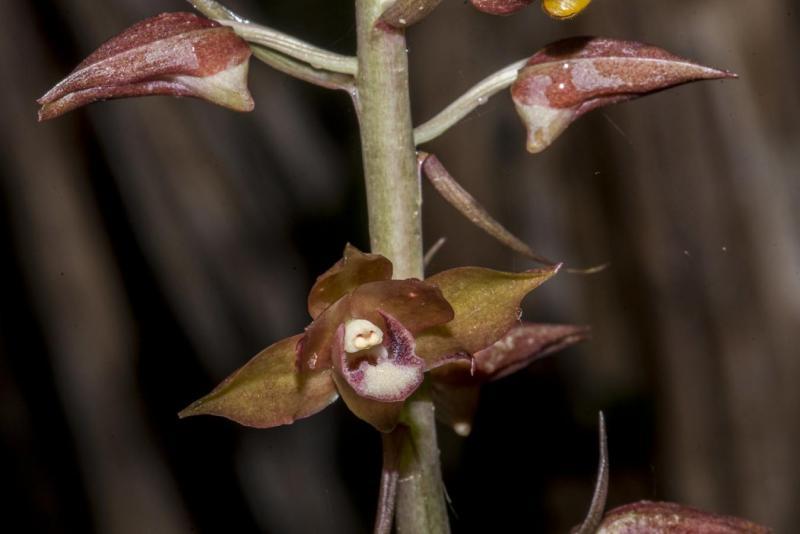Eulophia zollingeri
Also known as: Zollinger's Eulophia or Eulophia zollingerioides Eulophia macrorhiza h.v. papuana Cyrtopodium rufum Cyrtopodium sanguineum Eulophia emilianae Eulophia toyoshimae Eulophia sanguinea Cyrtopera papuana Eulophia macrorhiza Cyrtopera formosana Cyrtopera rufa Cyrtopera sanguinea Eulophia ochobiensis Eulophia formosana Eulophia macrorhiza var. minahassae Eulophia zollingeri f. viride Graphorkis papuana Eulophia carrii Graphorkis sanguinea Graphorkis rufa Graphorkis macrorhiza Eulophia macrorhizon Eulophia yushuiana In Australia - The Carrion Orchid In Japan - Imone-yagara in the subfamily: Epidendroideae
Native to: Assam - India Fujian - China Guangdong - China Hong Kong Japan Malaysia Thailand Yunnan - China
General Information
Zollinger's Eulophia is a warm to hot growing epiphytic or terrestrial orchid belonging to the sub family Epidendroideae native to India, China, Hong Kong, Japan, Malaysia, and Thailand. It is named after the Swiss Orchid Collector late in the 19th century.
Plant Description
Each new growth has numerous erect leaves
Flowers
Numerous fragrant blossoms appear during Summer and Spring
Fragrance
The orchid is fragrant.
Blooming Season
- Spring
- Summer
Care Notes
These orchids have a fine root system that can quickly die back if left dry for too long, but also does not like to be kept wet, so water regularly but ensure that the mix is dry before watering.
Fragrant:- IsFragrant
Climate
hot-forest-orchids Grows at low to high elevations.
Fertiliser
These plants do well with slow release fertiliser at the rate of 2-3 pellets per cup (250ml) of media. Additional fertiliser during the growth period may be beneficial, but not necessary.
Potting
These plants can be sensitive to repotting though should not require repotting regularly. Repotting should be done when the mix has broken down to the point that it doesn't absorb water or holds onto water for far too long, usually the plant shows a decline in growth as well.
The mix should be free draining, with a blend of 30% inorganic ingredients such as coarse sand, gravel or perlite, mixed in with about 70% organic ingredients such as peat, leaf litter or decomposed bark. Avoid commercial potting mixes as they can vary wildly and may contain "wetting agents" that can hold onto water for loo long, causing rotting and stunted growth.





















